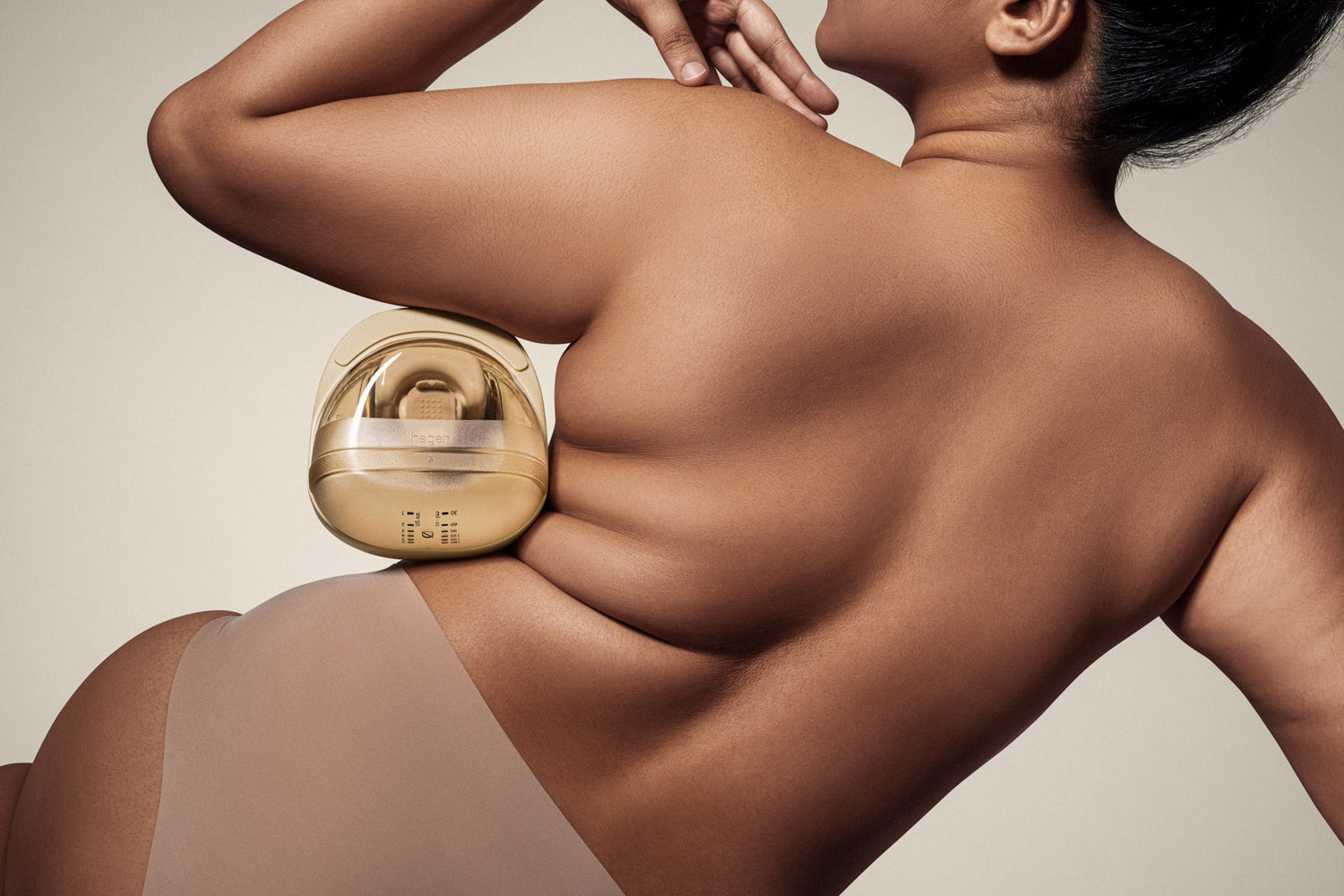Bottle feeding plays a crucial role in infant care, ensuring your baby receives the nourishment they need. It's a journey filled with learning and adaptation, and encountering issues along the way is almost a given. However, maintaining a positive outlook and confidently tackling each challenge is essential for mastering bottle feeding. In this blog, we’ll explore the most common bottle feeding issues that new parents encounter and offer helpful tips on how to overcome them!
Common Bottle Feeding Issues
Whether you’re breastfeeding, formula-feeding or opting for a combination, you’ll most likely use a bottle to feed your infant at some point. Navigating bottle feeding comes with its own set of challenges, from bottle aversion to nipple confusion. It's important to remember that these issues are very common and are all part of the parenting journey. Here are the common bottle feeding issues we’ll be addressing:
1. Bottle Aversion
Feeding a baby who is refusing the bottle can be exasperating. Bottle aversion, distinct from common feeding issues, occurs when a baby persistently refuses the bottle due to discomfort or negative associations rather than temporary factors like timing or hunger. To determine if your little one is having bottle aversion, you can look out for the following signs:
- Crying or fussing when they see the bottle: A clear indicator of distress related to bottle feeding.
- Turning away from the bottle: Demonstrates a deliberate avoidance of feeding.
- Clamping mouth shut: A refusal to open their mouth for the bottle.
- Physical distress during feeding attempts: Including gagging or pushing the bottle away.
- Increased irritability around feeding times: A sign of negative associations with bottle feeding.
If you spot these signs, it could mean your baby is experiencing bottle aversion. Understanding the heart of the issue is key to gently guiding you towards the best solution.
Causes of Bottle Aversion
To complicate matters, finding the root cause for bottle rejection can be tricky. There are many reasons for their aversion, such as:
- Hunger level: Little ones might show bottle aversion if they're overly hungry or not hungry at all. Observing and responding to their hunger cues with love and patience can help ease this aversion.
- Timing: Inconsistent feeding schedules can confuse your baby, leading to bottle rejection. Establishing a gentle yet predictable routine can provide them with a sense of security and acceptance towards bottle feeding.
- Dissatisfaction with milk temperature: Every baby has their own preference, some like their milk warm, just like cuddles, while others may prefer it at room temperature. Paying attention to these preferences can turn feeding time into a more comforting experience for your baby.
- Natural growth: As your baby grows, their needs and preferences evolve too. Growth spurts and developmental changes can shift their feeding patterns. Embrace these changes with understanding and adjust feeding practices to suit their evolving needs.
- Sensory sensitivities: The world of smells, tastes, and textures is new to your baby, and sometimes, the sensory aspects of bottle feeding might overwhelm them. You can try introducing the bottle with gentleness, allowing them to explore and get accustomed at their own pace.
- Negative associations: If your baby has experienced discomfort or pain during previous bottle feedings, they might start to associate the bottle with those negative feelings. Addressing and soothing these concerns with a nurturing touch can help build new, positive associations.
- Caregiver dynamics: Babies are intuitive and can sense changes, including who is feeding them. A change in caregiver can impact their comfort and acceptance of bottle feeding. Offering the bottle in a calm, loving environment, where they feel secure, regardless of who is feeding, can promote a more receptive attitude towards bottle feeding.
How To Help Your Baby With Bottle Aversion
Here are a few tips to ease your baby back into enjoying their bottle:
- Evaluate your feeding routine: If your baby refuses the bottle, it could be because they’re simply not hungry. Keep track of when they are rejecting it, as their appetite may fluctuate throughout the day. You can also try changing up your pre-feeding routine by introducing relaxing activities to diffuse any tension or fitting in some playtime to put you and your baby in a happier mood.
- Check the teats: Babies who have mastered breastfeeding may develop a stronger suck and get frustrated with newborn teats. Experiment with different teat flows to ensure you’re using a suitable one for their age and developmental stage. Hegen’s teat range offers five flow options, from extra slow flow for newborns to fast flow for babies beyond six months, to make it easier for parents to identify the right one for their baby.
- Change up your feeding position: Sometimes, the issue might stem from how your baby is being held during feedings. If the usual position seems to cause discomfort or distress, trying different holds or adjusting the angle at which your baby bottle feeds might be beneficial.
- Explore different formulas: If you're formula-feeding, the issue might be as simple as your baby’s preference for a different taste or formula composition. Babies can be sensitive to the subtle differences between brands or types of formula, and what works for one baby might not suit another. Trying out different formulas while consulting with a paediatrician to ensure they meet your baby’s nutritional needs can help you find a formula that your baby enjoys.
It’s important to approach each feeding session with patience and to avoid forcing the bottle, as this can lead to negative experiences associated with feeding. Instead of coercion, use positive reinforcement and consider seeking professional guidance if necessary. Remember, with love and persistence, you'll find the right approach for you and your little one!
2. Nipple Confusion
Nipple confusion occurs when an infant is having problems switching from the breast to a bottle and back again. Newborns tend to realise pretty quickly that compared to breastfeeding, bottles require less effort to obtain milk, leading them to prefer the bottle. This is because bottle nipples are firmer and less challenging to latch onto, and unlike nursing, the milk flow from bottles is faster and more consistent than the breast.
How To Help With Nipple Confusion
Fortunately, there are a few things you can try to help your baby overcome this bottle feeding issue. Check out our tips below for a smoother transition between these feeding methods:
- Introduce the bottle at the right time: The ideal moment to introduce the bottle to your baby is typically around the three-week mark after you’ve begun breastfeeding. This allows enough time for you to establish your milk supply and for your infant to practise nursing at the breast without becoming overly attached to it.
- Try paced bottle feeding: Paced bottle feeding can help prevent nipple confusion and reduce gas buildup, which may lead to colic. It also eases breast-bottle-breast transition by allowing your baby to have more control over the feeding pace. Start with a small milk bottle with a wide-base, extra slow or slow-flow teat – Hegen feeding bottles feature a velvety soft, elliptical-shaped teat that mimics a mum’s lactating breast, so your baby can use a gentle suckling motion instead of directly sucking to obtain milk, which encourages a natural latch-on experience. Check out our guide to paced bottle feeding.
3. Colic Issues After Introducing Bottle Feeding
While there is no specific definition for colic, the term generally refers to prolonged crying, usually for three or more hours, for seemingly no reason. Potential triggers include digestive issues, overstimulation or milk allergy. Breastfed babies who are latching correctly often do not experience colic, nor do they require burping after feeding. If you’ve observed increased colicky behaviour in your baby after introducing bottle feeding, it may be due to gas or reflux from the feeds.
How To Help With Colic Issues
Here are some soothing methods you can try if your baby is experiencing colic:
- Maintain an upright position during feeds: Feeding your baby in an upright position can further reduce the amount of air they swallow. Designed to be asymmetrical and off-centre, Hegen’s super soft teats allow for a natural upright feeding position, similar to nursing from the breast. This minimises the tilt that conventional baby bottles require and reduces the risk of milk back-flow, which can lead to mid-ear complications. Don’t forget to burp your baby after their feed to release any trapped gas in their tiny tummy!
- Consider paced bottle feeding: As mentioned earlier, paced bottle feeding allows your infant to set the pace of the feed, which reduces excessive air intake that can contribute to colicky behaviour. By giving your baby more control while feeding and slowing down the flow of milk, you can help to prevent digestive issues that may have been causing their irritability.
- Use an anti-colic bottle: Equipped with a built-in venting system that releases trapped air from the bottle, Hegen’s anti-colic teats reduce unwanted air intake, which otherwise takes up space in your baby’s tummy and makes them feel uncomfortable until they burp or pass gas – a potential cause for their teary outbursts. The venting also prevents milk from bubbling, minimising the oxidation of precious nutrients.

Facing hurdles with bottle feeding your baby is a common experience, particularly for new parents. Rest assured that these problems won’t last forever – we hope that by following our tips and making use of Hegen’s innovative feeding solutions, you are able to overcome these issues with confidence.
If you require more assistance with feeding your baby, do seek help early by speaking to a lactation consultant. Flegen, our team of International Board Certified Lactation Consultants (IBCLC) is here to assist you in addressing any lactation concerns and ensuring a confident start to your nursing journey.





